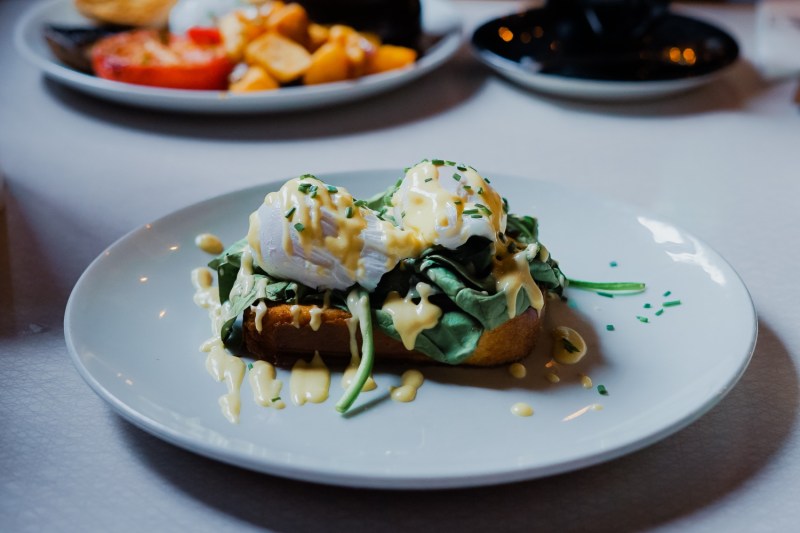
When we think of poached eggs, a leisurely breakfast comes to mind. One of those breakfasts that are enjoyed on a lazy Sunday morning, served to you in bed by a loving partner, or dined on delicately at an upscale brunch cafe on the coast. Poached eggs are not the quick and convenient before-work breakfasts we’re used to during the week. Those mornings, unless you’re one of those crazy morning people, are reserved for cereal, toast, or protein bars. Until now.
Did you know you can make decadently delicious, sinfully silky poached eggs in the microwave? Absolutely none of that complicated simmering-but-not-boiling, vinegar-but-not-too-much, ghostly-egg-whites-everywhere mess. Chef Erica Swides recently posted this genius hack on Instagram, and all you need to poach your eggs in the microwave is a glass bowl, a little water, and about two minutes of your time. And just like that, all of your poached egg favorites — tasty eggs benedict, avocado toast with a perfectly poached egg, or hot and piping ramen, topped with a delicious poached egg — are at your fingertips.
How to make poached eggs in the microwave
Method:
- Crack the egg into a small ramekin or bowl.
- Pour water over the egg until it is covered by about 1 1/2 inches.
- Microwave between 35 seconds to 1 minute, depending on your preferred doneness and the power of your microwave.
- Using a slotted spoon, remove the poached egg from the dish and enjoy!
Microwaved poached eggs tips and tricks
- The sides of the bowl need to be at least twice as tall as the cracked egg inside to ensure you can cover it fully with water.
- If the egg isn’t fully submerged, the yolk could burst, creating a very gooey mess in your microwave.
- This method may take a few attempts at getting it just right. Every microwave is different and will have its own perfect cook time.



